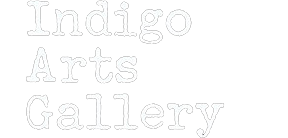Prince Twins Seven-Seven,
Nigerian Artist, Dies at 67
By WILLIAM GRIMES
Published: July 3, 2011
Prince Twins Seven-Seven, a prominent Nigerian artist and leading representative of the Oshogbo School, whose brightly colored, intricately patterned paintings evoked the world of Yoruba folklore and religion, died on June 16 in Ibadan, Nigeria. He was 67.
The cause was complications of a stroke, Harriet B. Schiffer, his dealer, said.
Prince Twins Seven-Seven changed his birth name, Olaniyi Osuntoki, to signal his status as the sole surviving child of his parents’ seven sets of twins. “They believed that I was the reincarnation of twins they had lost,” he told The Baltimore Sun in 2001.
“Prince” was more than a flourish. His grandfather was king of Ibadan in the 1890s and, until the artist became seriously ill, he was about to be installed as chief of his clan, the Osuntoki.
A dancer and singer, Prince Twins Seven-Seven found his calling as an artist in the 1960s when he became part of an experimental school in the city of Oshogbo run by Ulli Beier, a German linguist who became a promoter of African culture, and his wife, Georgina.
He began drawing in pen and ink on paper, but soon began using ink and paint on large sheets of laminated plywood. His subject matter was Yoruban myths, many of them recited to him by his mother, but others absorbed through the novels of Amos Tutuola and Daniel O. Fagunwa. In a consciously naïve style, he depicted village scenes, animals and deities, especially the goddess Oshun, filling in outlines and borders with jewel-colored patterns based on traditional textiles.
“Twins was the great modernist of the Yoruba tradition,” said Henry Glassie, an emeritus folklore professor at Indiana University and the author of “Prince Twins Seven-Seven: His Art, His Life in Nigeria, His Exile in America” (2010). “He turned back to tradition, just as Kandinsky or Klee did, but in his context drew on Yoruban sources to figure out an escape from tradition into modernity.”
Taiwo Olaniyi Osuntoki Oyewale was born on May 3, 1944, in the village of Ijara. As a young man, he danced with a traveling medicine show that sold Superman Tonic. He later formed a band, for which he was the lead singer and occasional drummer, and which recorded a number of hit records; he continued to perform and record throughout his life. Like his artwork, his music was rooted in folk tradition.
In 1964 he crashed a party at the Oshogbo art school and soon became integrated into its group of artists. After an exhibition of his work was mounted in Oshogbo, he moved to Lagos and later to London. His work was included in the 1989 exhibition “Magiciens de la Terre” (“Magicians of the Earth”) at the Pompidou Center in Paris.
He came to the United States in the late 1980s and settled in the Philadelphia area, although he traveled abroad frequently. His life entered a turbulent period, filled with drinking and gambling, he said. Destitute, he found work as a parking-lot attendant for Material Culture, a large Philadelphia store that sells antiquities, furnishings and carpets.
When the owner learned that Prince Twins Seven-Seven was an artist, he had him decorate the store’s wrapping paper. Later, he was given a small room to use as a studio.
His career rebounded. In 2000, the Indianapolis Museum of Art opened a wing devoted to contemporary African art with an exhibition featuring his work, which was also included in an exhibition that year at the National Museum of African Art at the Smithsonian.
In 2005, after being nominated by President Olosegun Obaganjo of Nigeria, Prince Twins Seven-Seven was named one of Unesco’s Artists for Peace, a position that gave him new international visibility.
Prince Twins Seven-Seven, who lived in Ibadan and Oshogbo, is survived by many wives, children and grandchildren.
A version of this article appeared in print on July 12, 2011, on page A20 of the New York edition with the headline: Prince Twins Seven-Seven, 67, An Artist of Nigerian Folklore.
